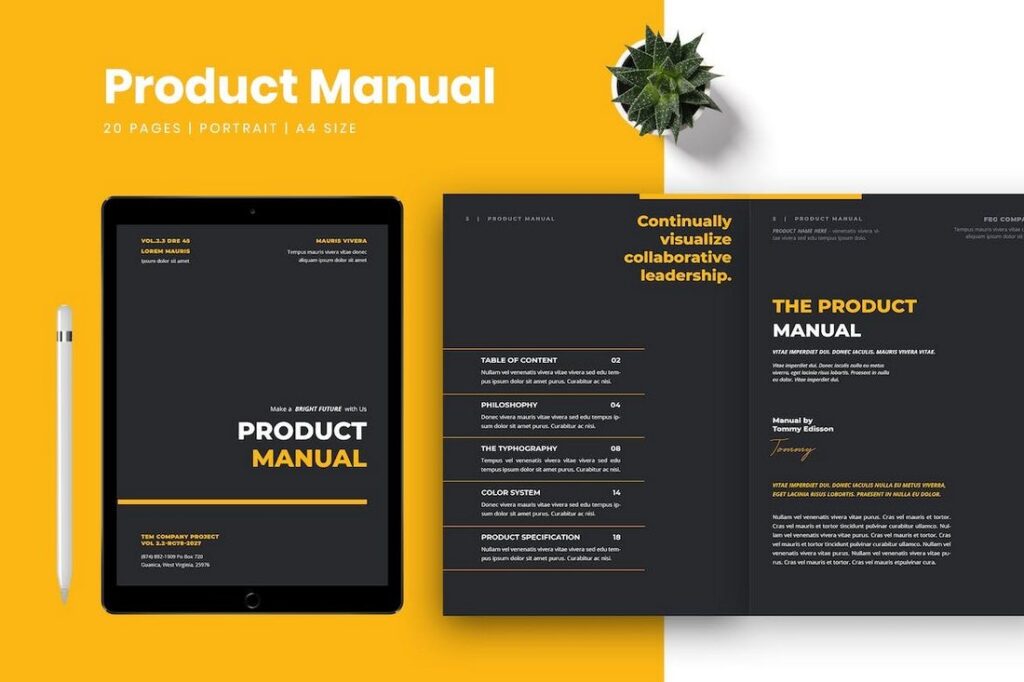Digital brochures versus print

Print brochures still have their place. For example, they’re great to give out at an event or in-store. Plus, for luxury brands, printing product info and pictures on gorgeous-feeling paper is a very effective sales and marketing tactic.
Digital brochures offer many benefits to B2B brands. They can be designed, edited, and distributed easily and are highly shareable. You can increase customer engagement by including interactive elements like quizzes, checklists, graphs, and animations. You can also monitor how viewers interact with the content to refine it over time.
What kind of information should be in a brochure?
The information you include in your brochure will depend on your content’s goals and your target audience’s needs. Here are some content elements and information to consider in your brochure.
Cover page. Seize this chance to capture your audience’s attention and imagination. Include compelling on-brand visuals, a punchy title, and perhaps a sentence or two explaining the main thrust of the brochure.
Index or contents page with links to the different sections. You could also include an author page to demonstrate thought leadership. Or you could add this in the back.
The body of the brochure. Consider the design and layout carefully (more on this later) and focus on the most important information. You can always link to further resources as part of the user journey through the brochure.
Contact form or information about how to get in touch. Don’t ask for too much personal data on the form. Name and email will do for now — you don’t want to risk alienating your lead.
A strong call to action. This is likely to be to contact your business, but you could also encourage the reader to visit landing pages, case studies, whitepapers, and other content assets. Or prompt them to sign up for a newsletter or attend a webinar or event. Whatever makes sense to your customer journey. Remember if you choose the right content creation platform, you’ll get valuable insights into how your lead is navigating and consuming the brochure so you can adjust it to boost engagement and increase conversions.
What questions should your brochure answer?
One thing that makes brochures such powerful lead generation tools is their ability to answer potential customers’ questions. This helps break down barriers to sales and shows your lead how your product or service will benefit them.
Here are some questions your brochure could answer:
(1) Who you are as a brand, how long you have been doing business, and what sectors or geographical areas you cover. This helps promote trust and tells a bit of the story behind your company.
(2) Why people need to use this product and service, the problems it solves, and why it is better than your competitors.
(3) Who already uses the product? Mentioning reputable clients demonstrates your credibility and encourages your readers to picture themselves using your offering.
(4) What results and benefits can customers expect?
(5) How to use or optimize the usage of the product.
(6) How to troubleshoot any common issues.
(7) What accreditations do you have, if relevant?
(8) What support do you offer, including technical support, consultation, etc.?
(9) How to get in touch or buy the product.